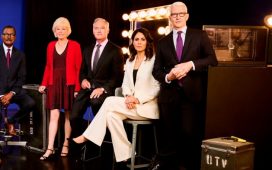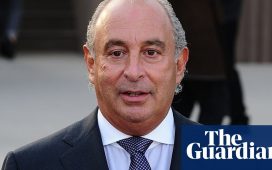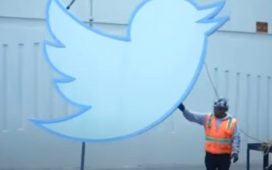CNN chief executive Sir Mark Thompson is working on plans for a digital subscription streaming service as part of a root-and-branch overhaul of the 24-hour cable news network in the face of an “existential” challenge to its business.
“There are plenty of things we have to fix at CNN,” said Thompson, who was last year appointed chief executive of the once-pioneering broadcaster to turn around its fortunes.
Thompson faces the twin challenges of arresting the decline in CNN’s traditional cable news business while accelerating the growth of digital services seen as the future of its audiences. The network is in the midst of an identity crisis as it is outflanked by Fox News on the right, and MSNBC on the left, which regularly beat it in the ratings.
In an interview with the Financial Times, Thompson likened the shift to digital platforms such as YouTube as an “existential question” in the next decade.
“Do we want to get more competitive in cable TV and by strengthening our schedules? Yes, we do,” he said. “But the rate at which people have been and probably will continue to cut the cord and not look at cable TV at all is a far, far greater strategic threat than the finer points of competition between individual cable channels,” said the former head of the BBC and The New York Times.
“The idea that there might be digital subscription is a serious possibility,” added Thompson, including streaming digital content. No decisions had been made, but “I think it’s quite likely that we’ll end up there”.
“We need an entirely new digital strategy. I don’t think any broadcaster has cracked the code on how to be yourself in terms of digital products. We’ve tended all to go for executions in digital which are rather newspaper-like,” he added. “Consumption of television is very strongly video-led and on platforms like YouTube and TikTok.”

Thompson managed a similar turnaround at his previous job at The New York Times, where he helped transform a legacy newspaper into a digital-first media group.
However, analysts said his task would be harder at CNN. The group had bigger egos to handle among its news anchors, and higher pay cheques to justify even as ratings have dropped.
At The New York Times, Thompson was given the freedom to use free cash flow to reinvest in its digital transformation, and he hopes again to “achieve what we need to achieve substantially by bootstrapping with the money that we’re generating”, alongside cost-cutting efforts.
“We remain a very cash-generative business,” said Thompson, who was hired by Warner Bros Discovery chief executive David Zaslav. CNN’s parent company is itself under pressure to cut costs, however, and analysts have flagged the news channel as among assets that could be sold to help reduce WBD’s $44bn debt burden.
Thompson has kicked off a reorganisation of CNN’s newsroom, bringing together separate domestic and international operations across TV and digital “to create a multi-platform, multimedia news organisation”. He has brought back Alex MacCallum, his former New York Times lieutenant who had previously led CNN’s push into streaming, to lead the transition to digital.
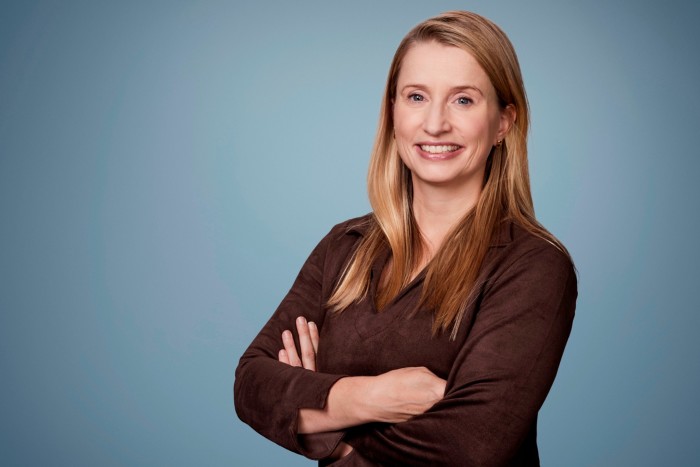
In the shift to a multi-platform news organisation, he said when asked about cost-cutting, there are “likely to be significant opportunities for de-duplication of parallel organisations and structures and activities. I think we can and should be looking for ways of doing what we do both better, but also doing it less expensively.”
Thompson said CNN was exploring various options for driving digital revenues, including registration to gain greater information on its audience that can be sold to advertisers, and direct-to-consumer subscriptions.
“We have 160mn people coming to us every month on CNN.com. And some tens of millions more off-platform. So it’s a very substantial group of people. There’s a large number of things we could do,” he said, pointing to different means of distribution through smartphones and other devices as well as “opportunities from generative AI”.
He forecast that viewers would want a continuous, TV-like experience playing on devices across different digital platforms. CNN broadcasts three TV channels — US cable, international and Max, the streaming service operated by its parent company — which often carry the same content but can also run different shows.
CNN has already tried a digital subscription service called CNN+, which was closed just a month after its launch in April 2022. The service was axed after WarnerMedia merged with Discovery, bringing its brands under the Max streaming service, with management believing it was too expansive.
Thompson said he would not seek simply to launch a similar service, which he described as “a big bold experiment, which was abandoned rather briskly”, and called for patience, including from his own staff.
“We’ll know in a few years time if we’re beginning to make progress, even if that still doesn’t look like it because of the aggregation of declining platforms and growing ones. But there’s a world of difference between having a pathway to the future and not.”
Success “won’t happen overnight”, he said.
He pushed back on critics, both internally and externally, who claim that he “doesn’t care about TV”.
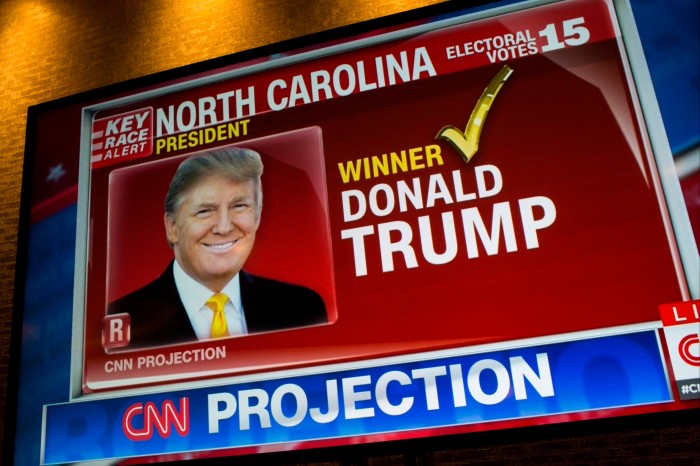
“That’s not true. I’m a TV guy, I love it,” he said, pointing to areas he wanted to strengthen such as financial news, and coverage in areas such as healthcare, climate and sports and entertainment.
CNN would not abandon its traditional base in cable TV, said Thompson, insisting that he retained “muscle memory” of wanting to win audiences from his time as head of the BBC and Channel 4.
“I love going to the control room and watching shows, going out and arguing about what to do. But we have to lean on these other things if we want to have a healthy CNN, five or 10 years from now.”
Thompson replaced Chris Licht, whose short tenure was dogged by some of the worst ratings in years. But Licht was also criticised for tinkering with shows and his roster of big-name anchors rather than making bold decisions about the future of the network.
A year after Licht’s exit, CNN has continued to trail well behind MSNBC and Fox News for viewers. CNN averaged just 467,000 viewers a day in the first quarter, compared with 1.3mn for Fox News and 814,000 for MSNBC, according to Nielsen.
CNN’s ratings malaise is particularly troubling because it is an election year in the US, typically a boom time for cable news channels.
Regarding the presidential race, Thompson promised that CNN would monitor the accuracy of comments made by Donald Trump more closely than in previous elections.
“We recognise that in 2016, it was probably too much unfiltered, undiscussed, un-fact-checked Donald Trump on the air everywhere, but including on CNN,” he said.
Another of Thompson’s predecessors, Jeff Zucker, drove a more opinion-heavy CNN through the Trump news boom, making for spectacular ratings and profits for the broadcaster.
Thompson sees CNN as a neutral, trusted source, with a balance of right- and left-leaning viewers “that’s quite unusual in modern American media”.


